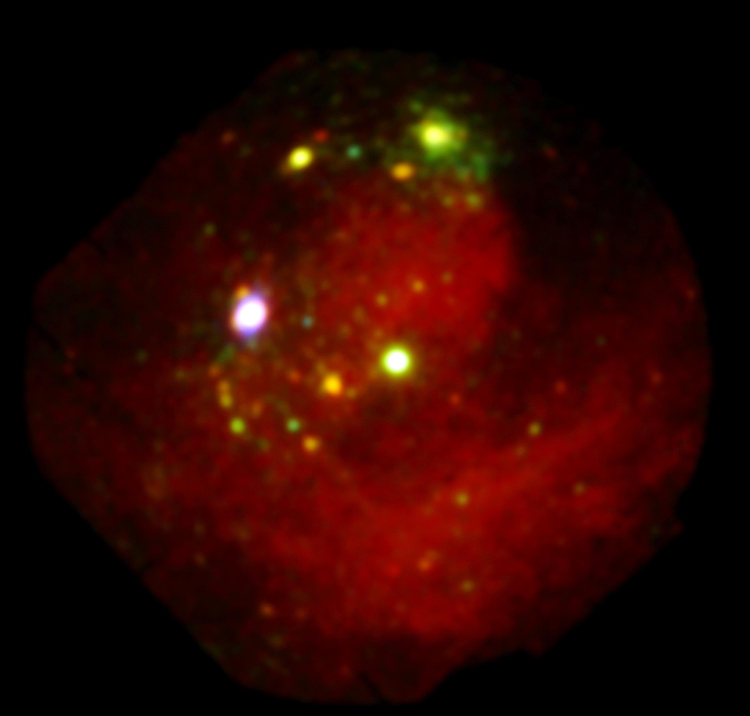
 Credit: Marco Iacobelli (XMM-Newton SOC) and ESA
Credit: Marco Iacobelli (XMM-Newton SOC) and ESA
The Color of Carina
The image above is an X-ray "true-color" image of the Carina Nebula, a region containing some of the youngest and most massive stars in our Galaxy, taken by the XMM-Newton Observatory. Low-energy X-ray emission is shown in red, while green and blue show more energetic X-rays from hotter (or more absorbed) plasma. Bright individual sources are massive stars that produce high energy emission when their strong stellar winds collide with something: the wind or surface of another star; dense circumstellar clouds; or sometimes the winds simply collide with themselves. But the Nebula is also permeated by a diffuse glow of X-rays, whose origin is somewhat of a mystery. This diffuse emission could be the result of the combined shocked produced by all the winds of all the stars in the nebula. Or it could have been produced by the long-ago explosion of a nearby star, a somewhat unlikely scenario that has recently gained some support. An interesting question: could the explosion of an old star have helped trigger the formation of these young stellar brutes?
Published: May 25, 2009
<
HEA Dictionary ● Archive
● Search HEAPOW
● Other Languages
● HEAPOW on Facebook
● Download all Images
● Education ● HEAD
>
Each week the HEASARC
brings you new, exciting and beautiful images from X-ray and Gamma ray
astronomy. Check back each week and be sure to check out the HEAPOW archive!
Page Author: Dr. Michael F. Corcoran
Last modified Monday, 26-Feb-2024 17:44:47 EST


